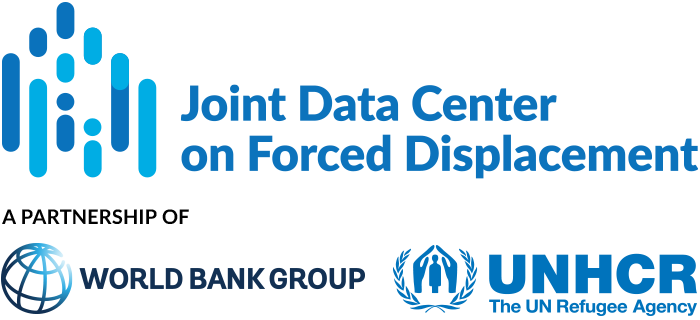Refugees and IDPs in Sudan
Inclusion of IDPs and Refugees in Sudan High-Frequency Household Welfare Monitoring Survey
In this section
Overall objectives
The main objective of this activity is to fill existing data gaps on the welfare and living conditions of forcibly displaced populations in Sudan—specifically internally displaced persons (IDPs), refugees, returnees, and host communities—through their inclusion in high-frequency phone surveys (HFPS).
The data will help monitor the socioeconomic impacts of the ongoing conflict, including access to food, employment, basic services, and mental health, and will provide information for humanitarian and development responses. This activity builds on previous rounds of HFPS conducted by the World Bank and leverages technical experience from the UNHCR and the Joint Data Center on Forced Displacement to ensure inclusion of displaced populations. The results will support policy dialogue, operational responses, and coordination among national authorities and international partners such as the World Bank, UNHCR, and other development actors in Sudan.
Activity description
This activity will extend ongoing World Bank-supported High-Frequency Phone Surveys (HFPS) in Sudan to include representative samples of refugees and internally displaced persons (IDPs), generating timely data on livelihoods, food security, employment, and access to basic services across displaced and host populations.
The refugee sample will cover approximately 1,500 households across seven camps in White Nile, Kassala, Blue Nile, and Red Sea states, using assistance records and support from UNHCR and camp partners to verify contact information. For IDPs, the survey will identify displaced households using EGRISS-compliant screening questions integrated into the main HFPS, with a sample expected to include about 1,200 IDP households.
Data will be collected through a computer-assisted telephone interview system (CATI), with real-time monitoring and quality control measures in place. The questionnaire includes both core and displacement-specific modules, and enumerators will be trained to ensure quality and sensitivity.
Findings will be disseminated through microdata publication, analytical briefs, and presentations, supporting humanitarian and development planning by the World Bank, UNHCR, and partners.
Engagement with partners
The activity will be led by the World Bank in close collaboration with UNHCR’s Regional Bureau of East and Horn of Africa and Great Lakes Region and UNHCR Sudan operation. The World Bank will hire a survey firm as the implementation agency. Consultations with UNHCR and humanitarian partners will be used to adapt and finalize the questionnaire.
Background and Context
Sudan has been plunged into a large-scale humanitarian crisis following the outbreak of conflict in April 2023. Almost two and a half years into the conflict, over 11.5 million people are internally displaced—the highest number globally—and nearly 874,000 refugees remain in the country. Many of the displaced have experienced multiple relocations, often settling in areas already facing poverty, weak infrastructure, and limited access to essential services.
The conflict has deepened existing vulnerabilities, with over 24 million people facing acute food insecurity and significant risks of malnutrition, particularly among children. Pressure on host communities continues to grow, stretching already fragile systems for health, education, water, and shelter.
Despite the scale of displacement, Sudan remains a data-scarce environment. The last nationally representative household survey was conducted in 2014–15, and existing data systems are not designed to identify or monitor forcibly displaced populations. High-frequency phone surveys offer a practical, cost-effective approach to collecting timely data in this rapidly evolving context, providing valuable insights for policymakers, development partners, and humanitarian actors, including UNHCR.
Contact
For further details on this activity, please contact:
Wendy Karamba, JDC Focal Point, [email protected]
Additional resources
More activities
Internally displaced people in Mali
Inclusion of internally displaced people in the Mali Household Living Conditions Survey.
Refugees and Internally Displaced People in Cameroon
Inclusion of refugees and internally displaced persons in the 2023 Cameroon Population and Housing census.
Internally displaced people in the Central African Republic
Developing a new module for internally displaced people in the national Harmonized Household Living Conditions Survey.


